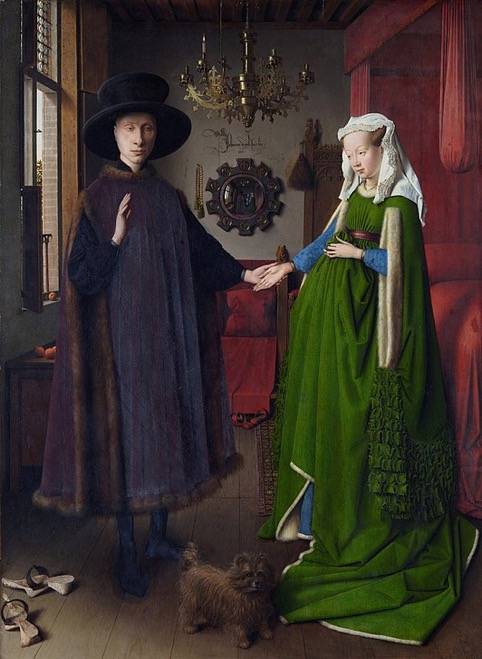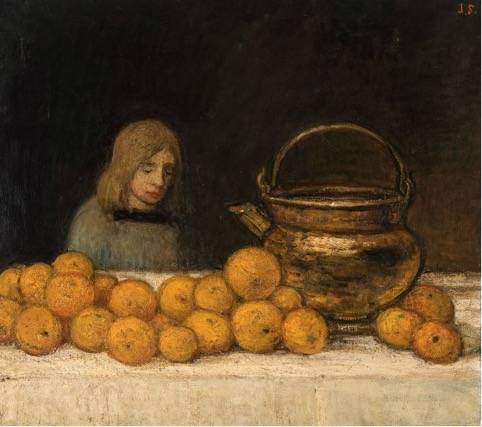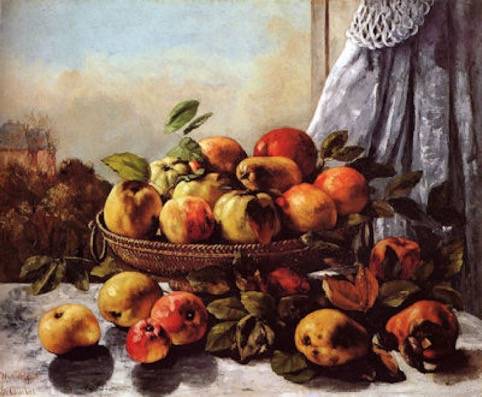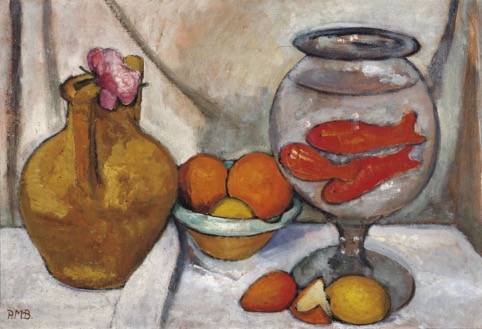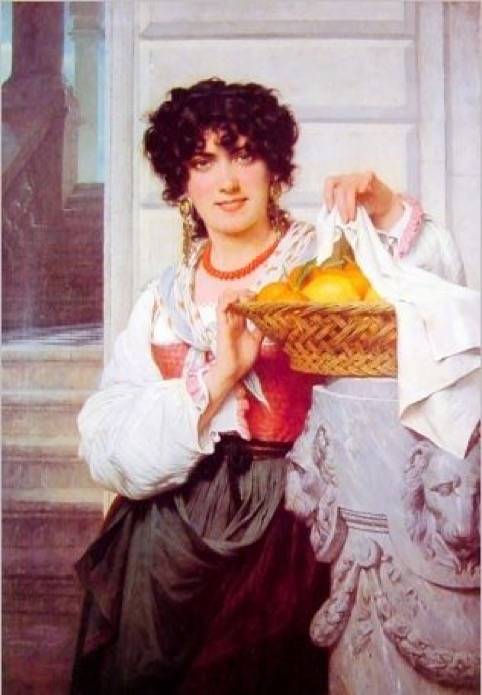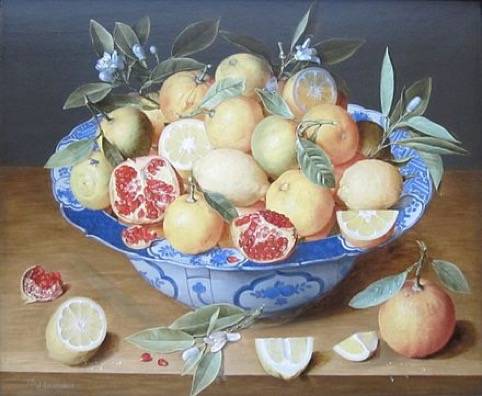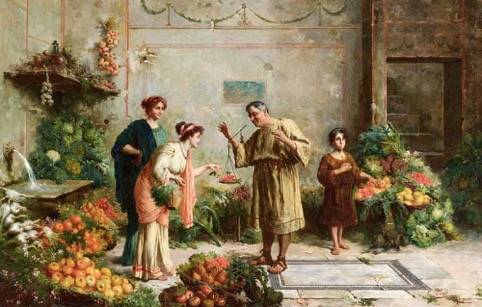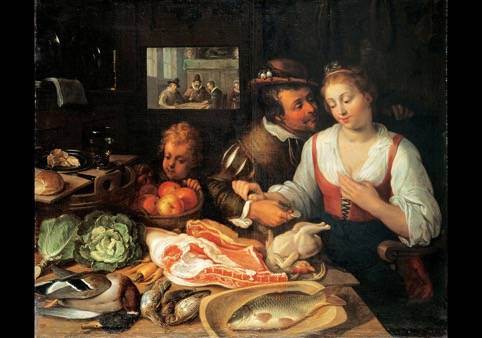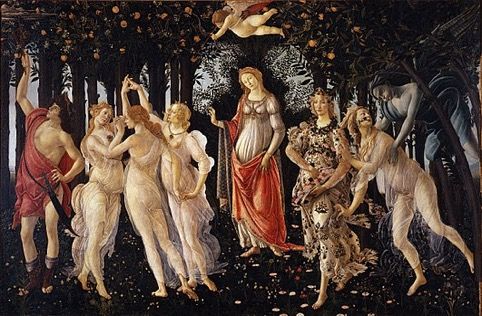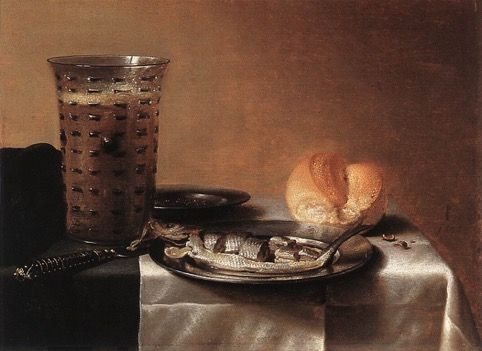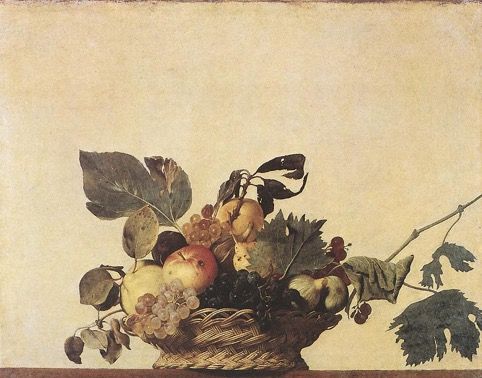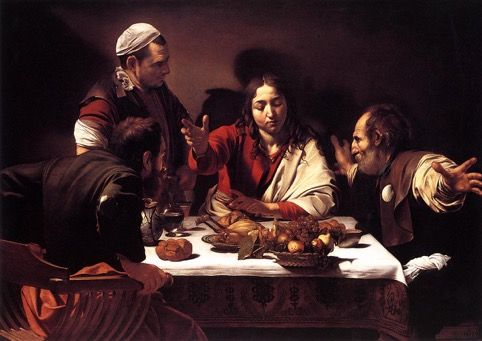Botticelli shows in La Primavera an allegory at the beginning of spring. In his time, art emphasized the ecclesiastical. There was mainly church art and with this work Botticelli partly broke this rule. However, there are still elements present that focus on this. Thus, Venus is depicted under a semi circle, formed by orange trees that stood for royalness.
After the fifteenth and sixteenth centuries where people mainly showed the side of God's nature, in the seventeenth century the wealth of man is central. In this period the still life got its fame. This period was called 'The golden age'. The still life was created by the increasing interest in exotic fruits, but it was also something that they wanted to unpack and show off. For a long period of almost 200 years, various painters have also been active in these still life, including food still life. They are divided into two categories, including the simple food still life and the food still life. Both are made to show what they have, yet you can distinguish them from each other. An example of this is the work of Pieter Claesz, Still life with herring and beer. Despite the subdued reproduction, there are various elements in the painting that indicate that they were wealthy people who could afford more. So you have the white bread that was not cheap at the time, the herring pre-cut on a tin plate, the decorated beer glass, and so on.
Botticelli toont in La Primavera een allegorie op het begin van de lente. In zijn tijd werd er met kunst vooral de nadruk gelegd op het kerkelijke. Er was vooral sprake van kerkelijke kunst en met dit werk brak Botticelli voor een deel deze regel. Wel zijn er nog steeds elementen aanwezig die zich hiertoe richten. Zo wordt Venus afgebeeld onder een halve cirkel, deze gevormd door sinaasappelbomen die stonden voor de koninklijkheid.
Na de vijftiende en zestiende eeuw waar men vooral de kant van Gods natuur toonden, staat in de zeventiende eeuw de rijkdom van de mens centraal. In deze periode heeft het stilleven zijn faam gekregen. Ze noemde deze periode ‘De gouden eeuw’. Het stilleven is ontstaan door de toenemende interesse in producten maar daarnaast is het vooral iets waarmee men wou uitpakken en pronken. Gedurende een lange periode van bijna 200 jaar zijn er dan ook verschillende kunstschilders toongevend geweest aan deze stillevens, onder meer de voedselstillevens. Ze zijn opgedeeld in twee categorieën waaronder de eenvoudige voedselstillevens en de pronk voedselstillevens. Beiden zijn ze gemaakt om te tonen wat men heeft maar toch kan je ze van elkaar onderscheiden. Een voorbeeld hiervan is het werk van Pieter Claesz, Stilleven met haring en bier.
